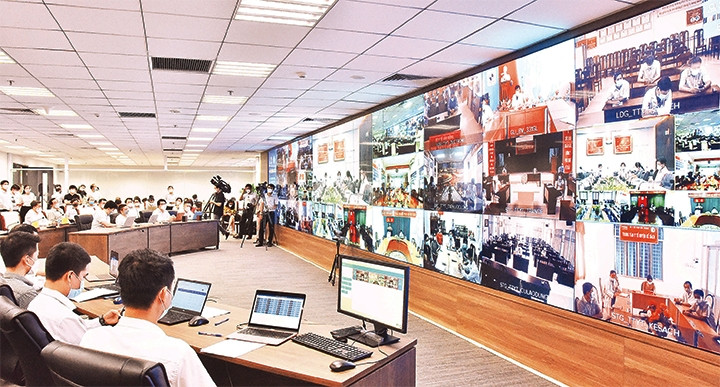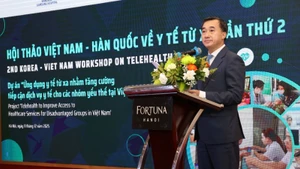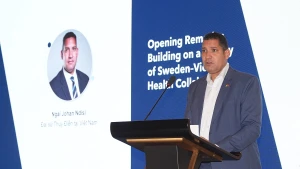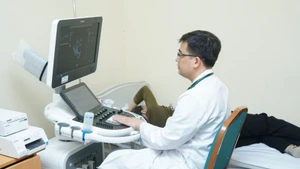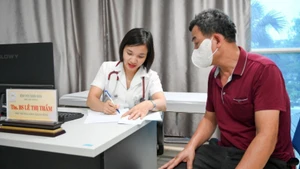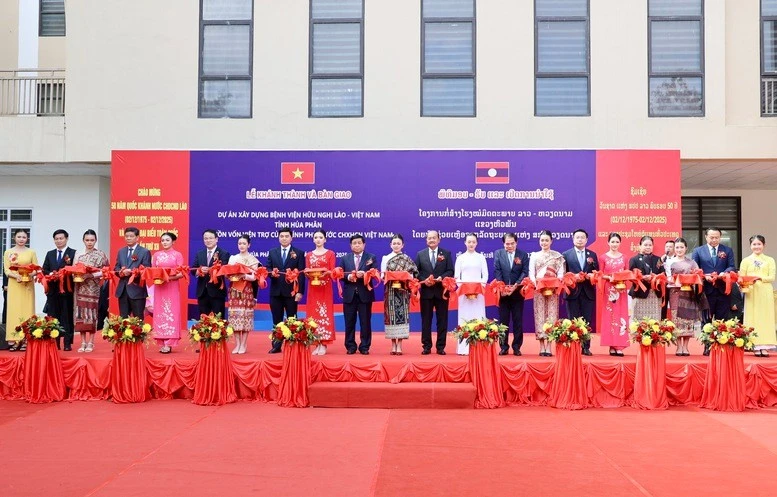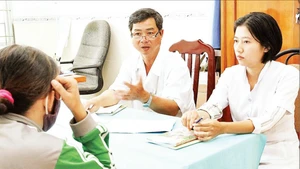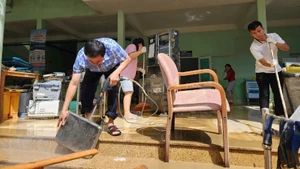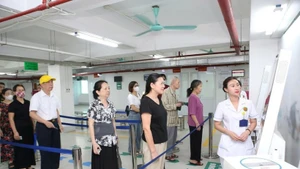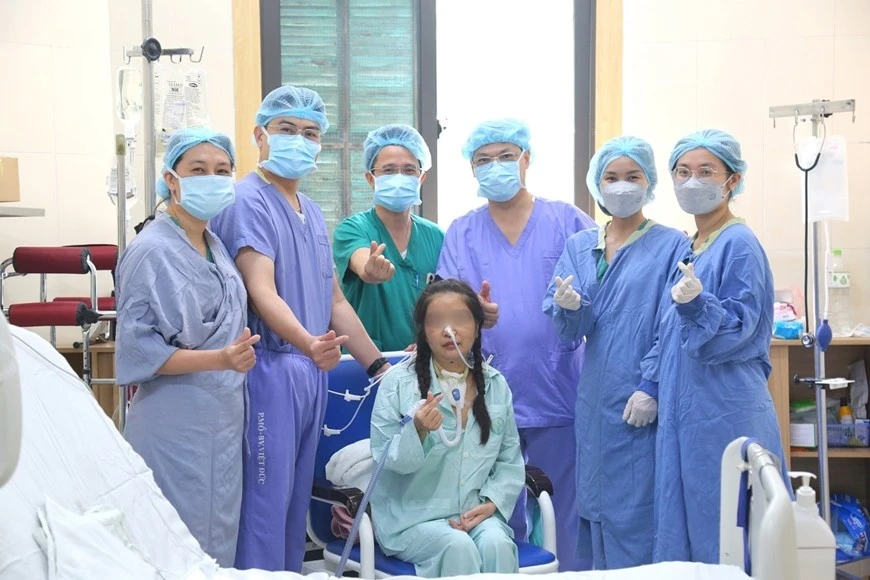Connecting all hospitals at district level
The Ministry of Health began the implementation of the remote medical examination and treatment project since June 2020. Up to now, 100% of health facilities at district level across the country have joined the project thanks to the support of the Ministry of Information and Communications, software technology enterprises, and network providers.
This connection has helped bridge the gap in healthcare disparity between regions and between the upper and lower levels while benefiting both patients and medical staff.
At the launch of the Telehealth platform, doctors at Ho Chi Minh City’s Cho Ray Hospital consulted with doctors of several other medical facilities in Can Gio district (Ho Chi Minh City), Hau Nghia district (Long An province), and Thuan An district (Binh Duong province) and medical facilities in other districts and towns nationwide on the treatment needed for COVID-19 patients in critical condition.
Under the remote medical examination and treatment project, an upper-level hospital has many satellite hospitals, and a lower-level hospital can be the satellite hospital of many upper-level hospitals simultaneously so that local medical workers can receive advice from leading experts about how to best treat their patients.
Recently, the Ministry of Health has directed COVID-19 treatment hospitals to deploy Telehealth between departments in the hospital and between hospitals in order to improve the effectiveness of treatment for patients with COVID-19.
According to Ngo Vinh Quy, Vice General Director at Viettel Business Solutions under the military-run telecom provider Viettel, the Viettel-developed remote health check-up and treatment system Telehealth has been operating since April 2020. It has connected more than 30 central-level hospitals with more than 1,400 medical facilities in the lower-levels, including those in the mountainous and island areas.
This is one of the breakthroughs in the health sector’s digital transformation, towards realising its goal of working for “a healthier Vietnam”. To date, nearly 500 consultation and over 200 training sessions have been organised through the system.

Prime Minister Pham Minh Chinh witnesses doctors of Ho Chi Minh City’s Cho Ray Hospital consulted doctors of several other medical facilities at district level via the Telehealth Platform on treatment for COVID-19 patients in critical conditions at the launch of the platform on August 8, 2021 (Photo: VGP).
Optimising Telehealth for maximum effectiveness and efficiency
After participating in the project, Hanoi Medical University Hospital gained positive results in ensuring social distancing amidst the complicated developments of COVID-19, reducing costs, time spent by patients and overload, and strengthening the capacity of lower-level hospitals.
Assoc. Prof, Dr. Nguyen Lan Hieu, Director of the Hanoi Medical University Hospital said that the Telehealth platform will help narrow the disparity gap amongst healthcare facilities. Although Telehealth cannot completely replace traditional ambulatory and hospital-based practices, it is a useful tool to support the health system.
Regarding the diagnosis and treatment of patients COVID-19 in particular, for those having common symptoms of COVID-19 such as a dry cough, fever, tiredness, fatigue, loss of taste or smell, these can receive virtual clinical examinations via photos sent to the platform, thus saving their travel time and administrative procedures while limiting the transmission of the virus.
Via Telehealth, doctors from upper-level hospitals can share their experiences and knowledge with their colleagues from lower-level hospitals. A Telehealth consultation or training session can be held among dozens or even hundreds of locations at the same time without a limit on number of participants.
Telehealth also allows doctors from many hospitals to work together in providing consultation to a severely ill patient.
In the future, the development of medical devices which can be integrated with smartphones as well as the coverage of 5G technology will help increase the connectivity of the Telehealth platform and similar services. In the long term, this is an important infrastructure system for remote medical examination and treatment, contributing to improving the quality of patient care.
Doctors’ experience, advanced equipment, technology solutions, and digital data together have brought about progress in medical examination and treatment. Telehealth is not only a useful solution during the COVID-19 pandemic, but will also be a digital transformation trend in the healthcare sector in the future.
